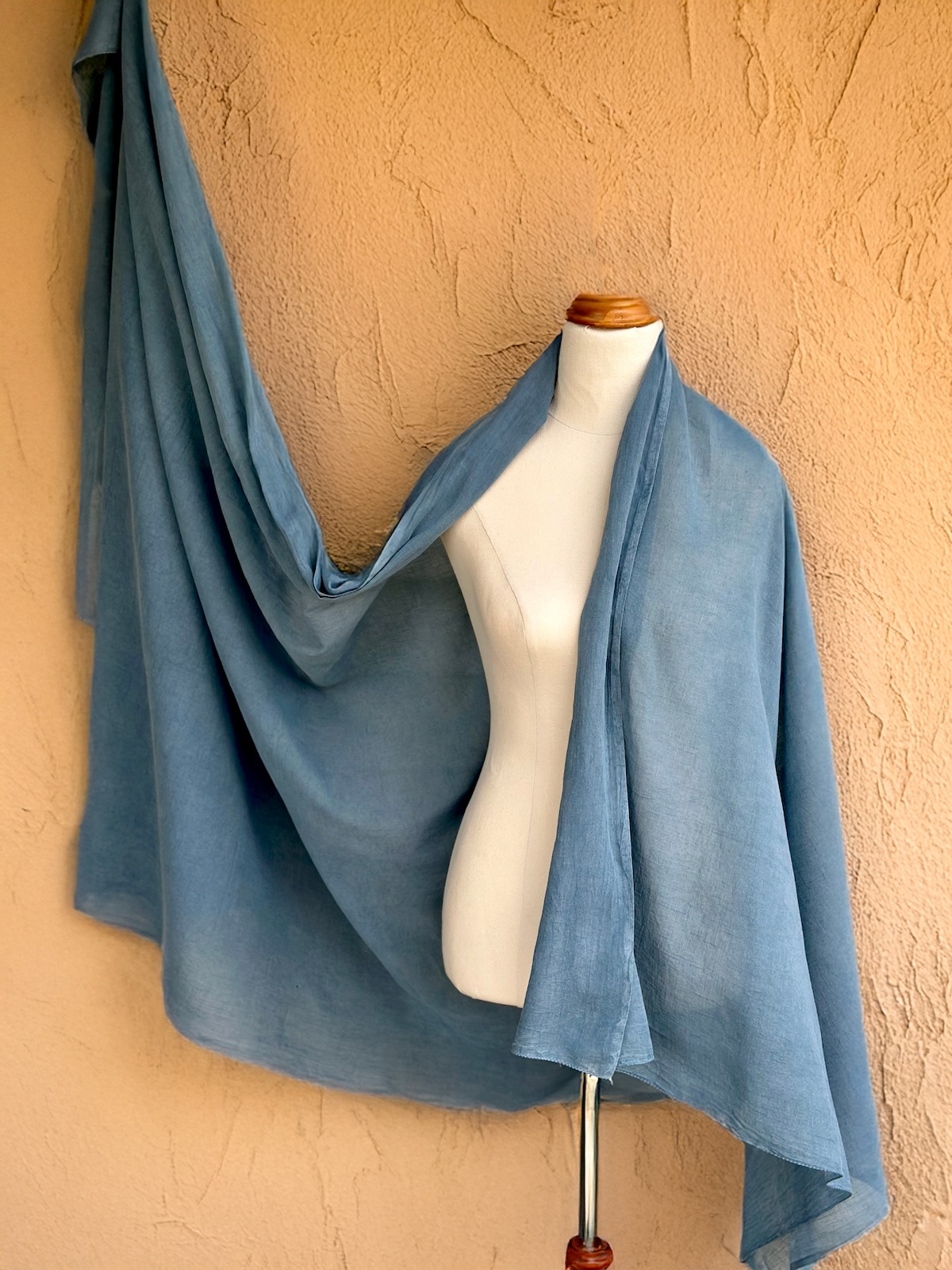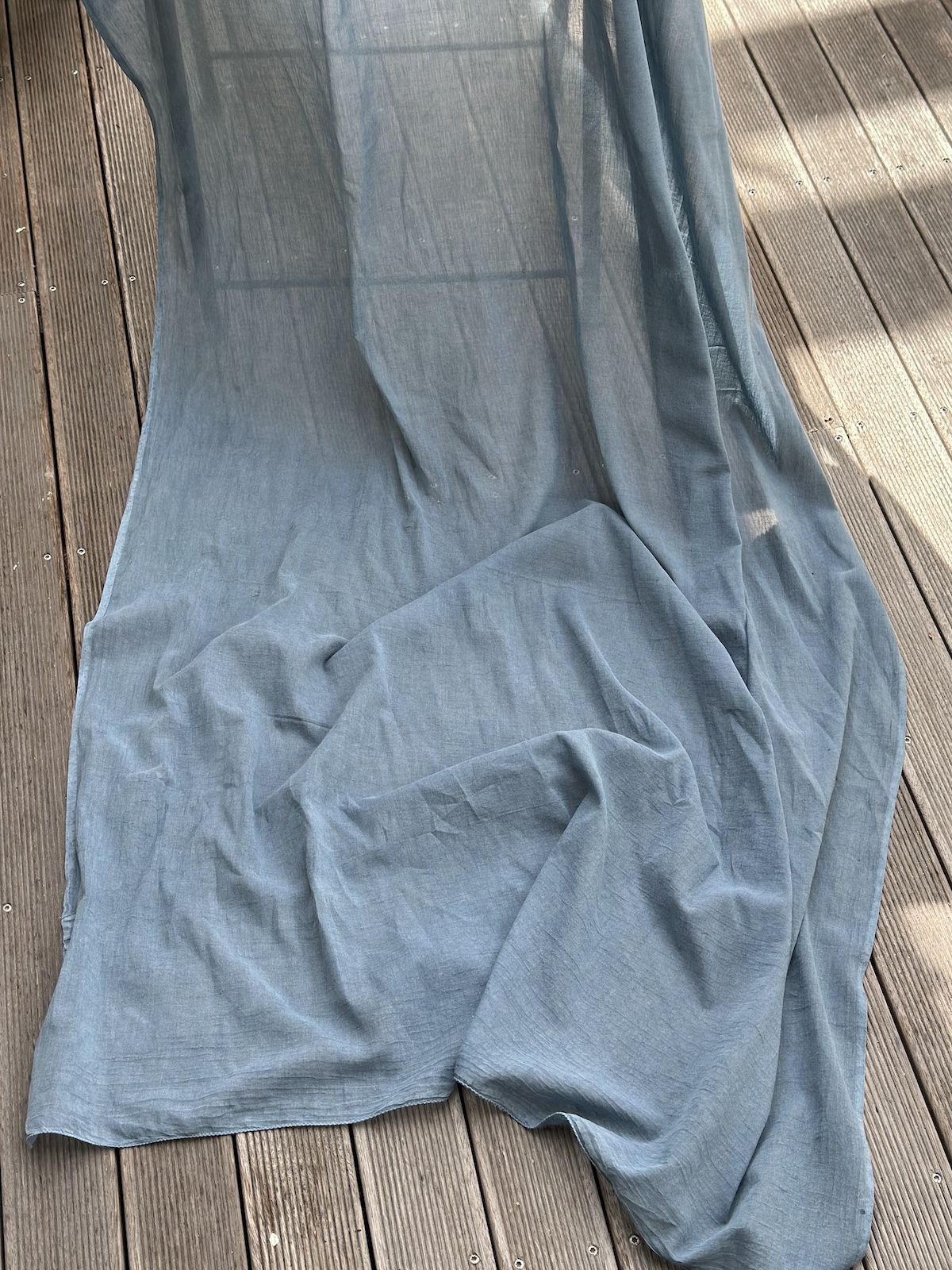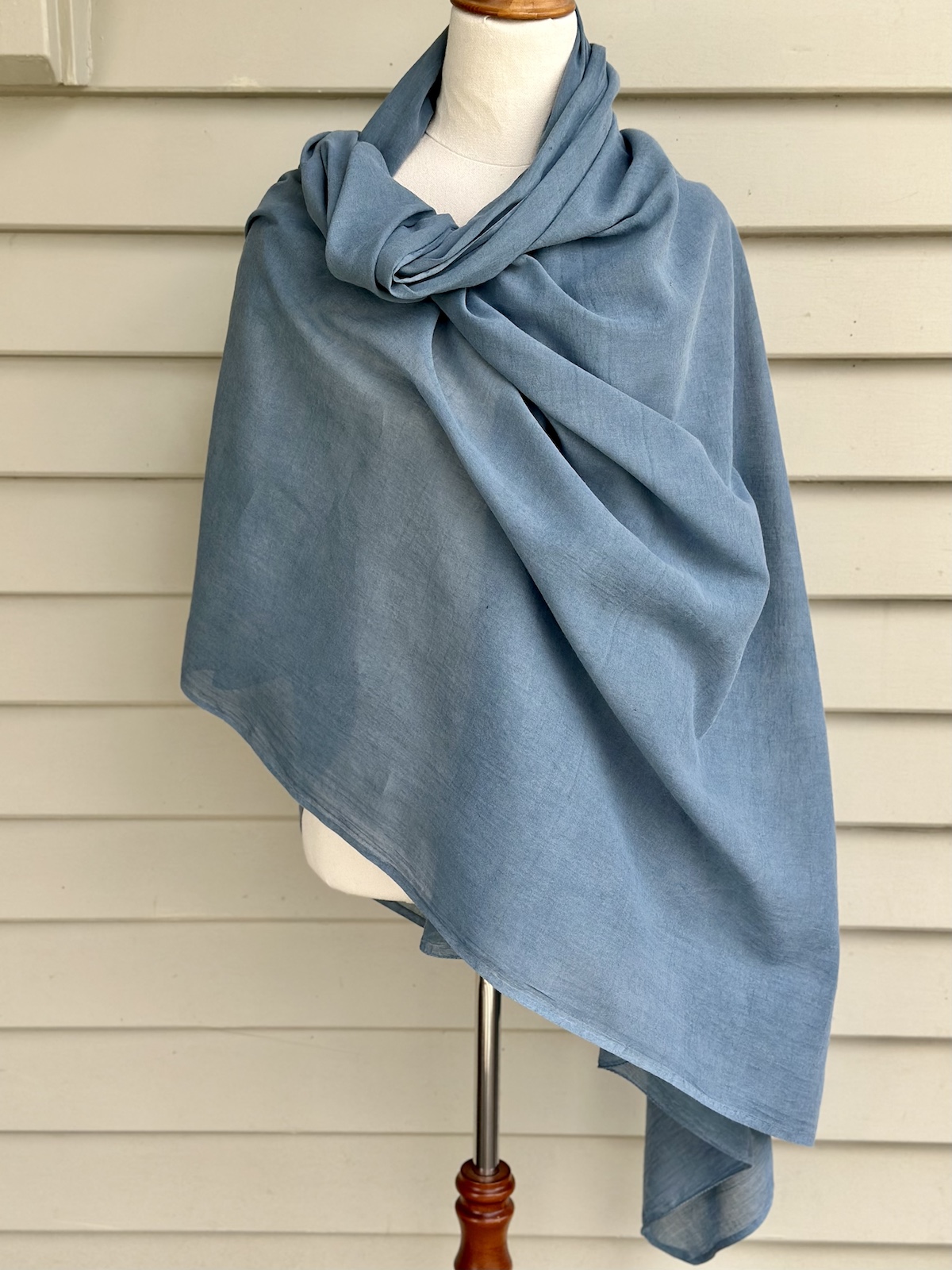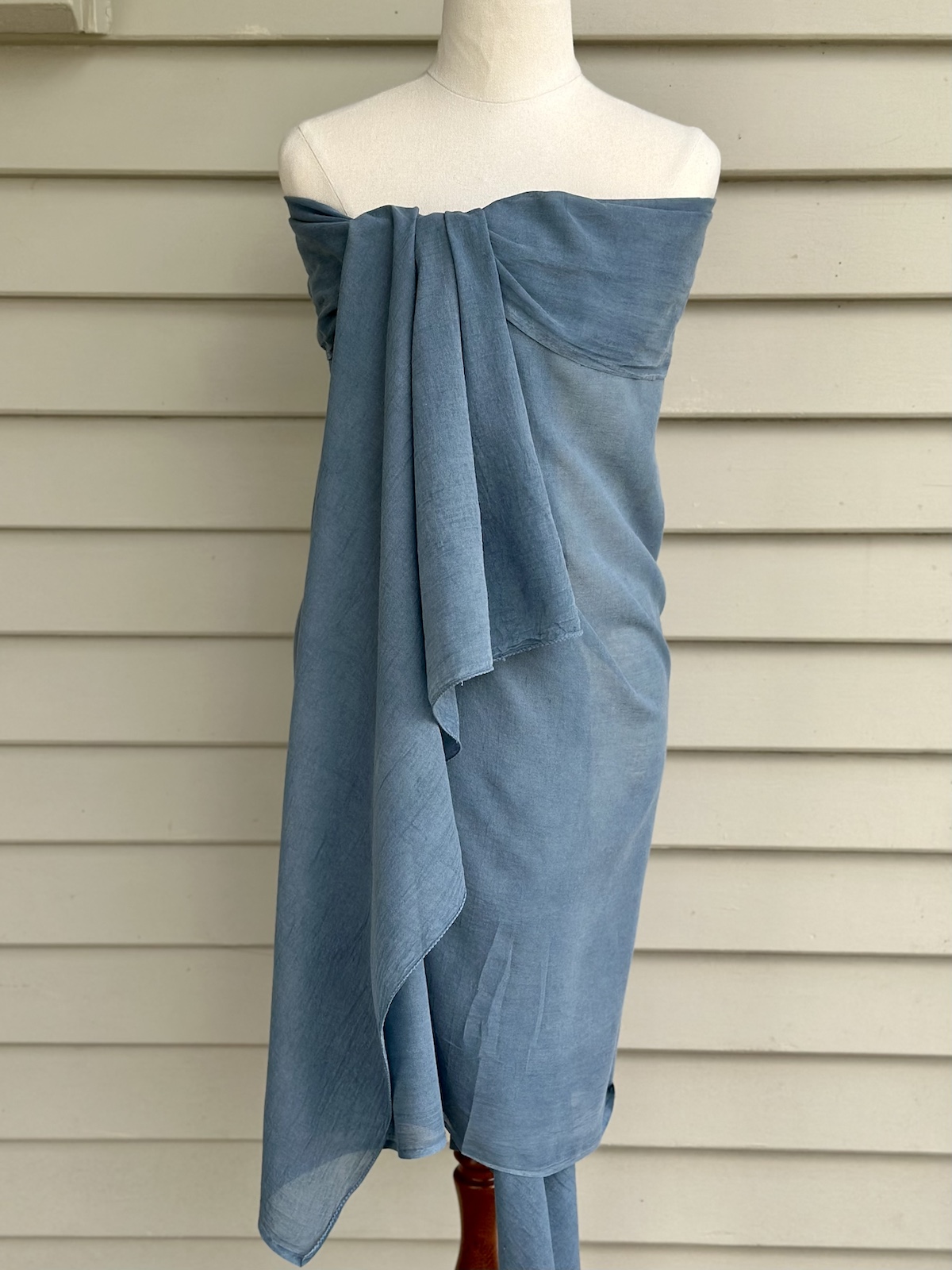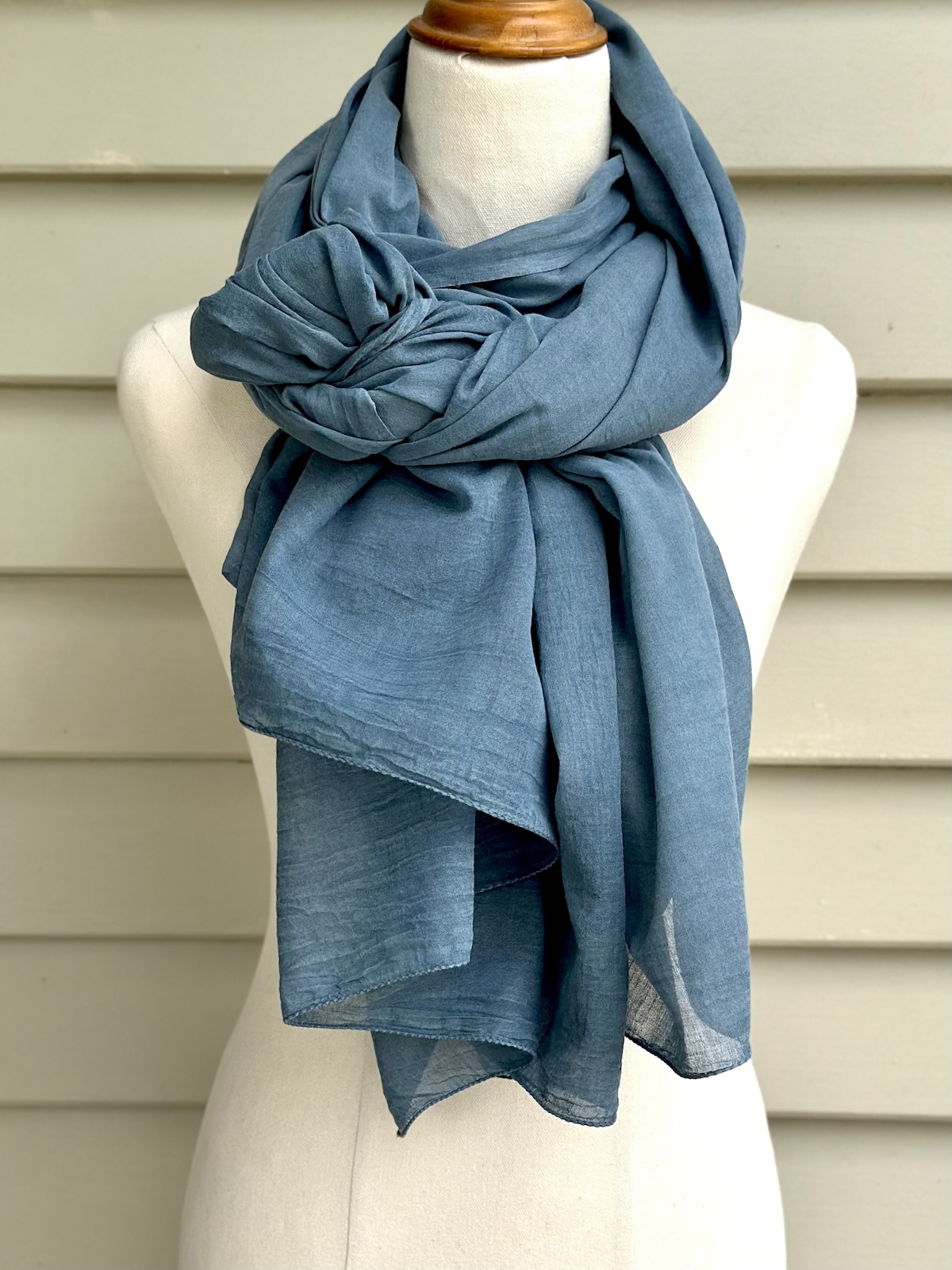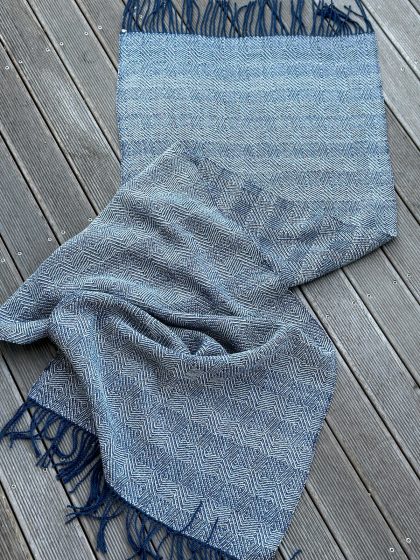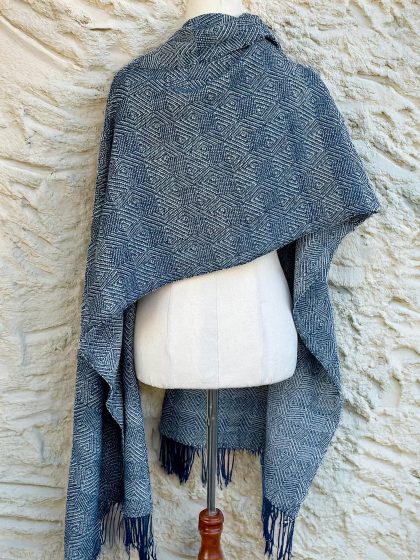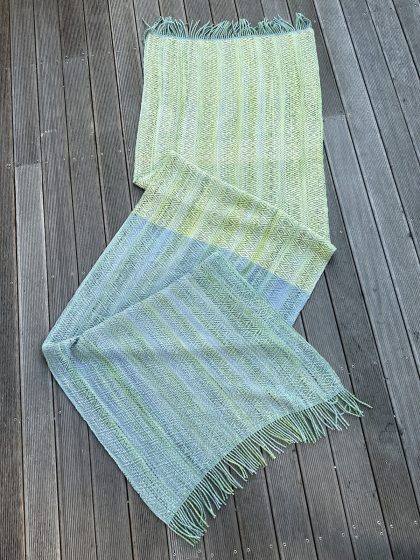Indigo: Dipped solely in an indigo vat to create that jeans blue of denim.
Natural indigo is obtained from a variety of plants, the most widely used one being indigofera tinctoria. This shrub grows wild and is cultivated in tropical areas throughout the world. Indigo powder – the famous blue dye – is extracted from the leaves of the indigo plant, and that is what I use to make my indigo vat. I use natural indigo from indigo farms in South India.
Natural indigo is not to be confused with Indigotin, which was first synthesized in 1880. Today, synthetic indigo is manufactured from raw materials obtained from the petrochemical industry. It is used on a large scale in the commercial production of blue jeans. Unlike synthetic indigo, natural indigo is extracted from indigo plants.
This shawl was dipped numerous times in the indigo vat to achieve this deeper tone.
The shawl is a dream cloth. Very large and deliciously sheer and supple. It drapes well, and will look lovely wrapped a couple times around your neck, and as an accent piece. This can also be worn as a beach cover-up, like a sarong.
The shawl has been hand washed and line dried, then hot pressed. Traces of the indigo dye will still be on the cloth so care is needed when subsequently washing. This will fade out over time.
Dimensions: width 43″ – 100cm // length 90″ – 228cm.
Dye: Natural Indigo vat.
Materials: Organic cotton muslin. Rolled hem.
Care: To protect the natural dyes and to preserve the vibrancy you absolutely must use a pH neutral liquid detergent. Hand wash only. Squeeze and twist to remove excess water and hang to dry. Hot iron.
__________
Though I strive, it is difficult to 100% recreate a natural dye fibre. Every piece is unique and numbered.
Buttery organic cotton spun in India, woven by artisans to a soft semi-transparent fabric that is light and airy. These are sourced undyed in their natural off white state. Then I prepare the fibre for dyeing. It takes many hours to scour and mordant the fibre before the dye can reach the cloth. After dyeing the cloth must rest for at least 2 weeks to settle the dye and optimise lightfastness. Only then can the cloth be washed and prepared for wear.
Natural dyeing is the pure historic foundation of colour. It is a long worthwhile process with numerous steps and stages. Before modern day industrial milling and dyeing, natural dyes were the only way to add colour to beige, brown and off white fibres. This was most arduous as many base ingredients (roots, bugs, leaves, flowers) had to be hand harvested and pounded over time to produce the base for dyeing. Life is much easier now as I can purchase the powder or small bug or root bits ready to go. The harvesting may be more streamlined, but the human element remains, and the base dyes are more expensive than acid dyes.

